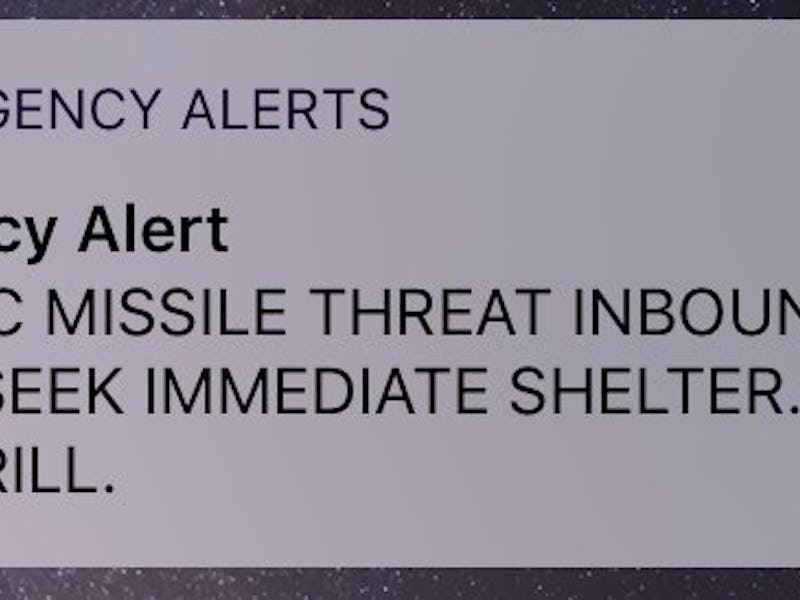
A confusing user interface was at the center of Hawaii’s missile alert false alarm on Saturday, it emerged in the wake of the event. The state has been testing the system with some regularity since November, but one employee’s accidental triggering of a real alert sent out a message to phones in the state and caused panic among residents.
The Washington Post reports that just after 8 a.m. Hawaii–Aleutian time, an employee of the Hawaii Emergency Management Agency started his shift. Around 8:05 a.m., he had to start an internal test of the missile alert system. His computer had two choices from the drop-down list: “test missile alert,” and “missile alert.” As the events on Saturday showed, he chose the wrong option.
The revelation that the alert was essentially triggered by a confusing user interface sent shockwaves through the tech community. Eric Umansky, co-founder of cataloguing service DocumentCloud, described it as an “epic design fail.” His comment was retweeted over 5,000 times.
“This will be in UX [user experience] design textbooks for years to come,” freelance technology writer Owen Williams said on Twitter Monday.
Around 38 minutes after the alert went out to cellphones, a second message informed communities that there was no missile threat to the state of Hawaii. This message took so long to send out because the state officials needed to work with the Federal Emergency Management Agency to write the false alert and get it ready.
“The false emergency alert sent yesterday in Hawaii was absolutely unacceptable,” Federal Communications Commission chairman Ajit Pai said in a statement. “It caused a wave of panic across the state—worsened by the 38-minute delay before a correction alert was issued. Moreover, false alerts undermine public confidence in the alerting system and thus reduce their effectiveness during real emergencies.”
The commission said that an investigation was “well underway.” Preliminary results suggested the state government did not have reasonable controls to stop the transmission of a false alert. From here, authorities will focus on immediate corrections and solve any issues that could lead to further false alerts.
The emergency system has now been updated with a button that overrides alerts within seconds of being issued. While the original version asked for a confirmation from the first user, a new version will also ask a second user to check and confirm the alert. The agency has also suspended internal drills until the end of the investigation.
The employee at the center of the story is receiving training to avoid a repeat of the incident.
“This guy feels bad, right. He’s not doing this on purpose — it was a mistake on his part and he feels terrible about it,” state emergency management administrator Vern T Miyagi said in a press conference on Saturday reported by News.com.au, adding that the employee in question would “be counselled and drilled so this never happens again.”